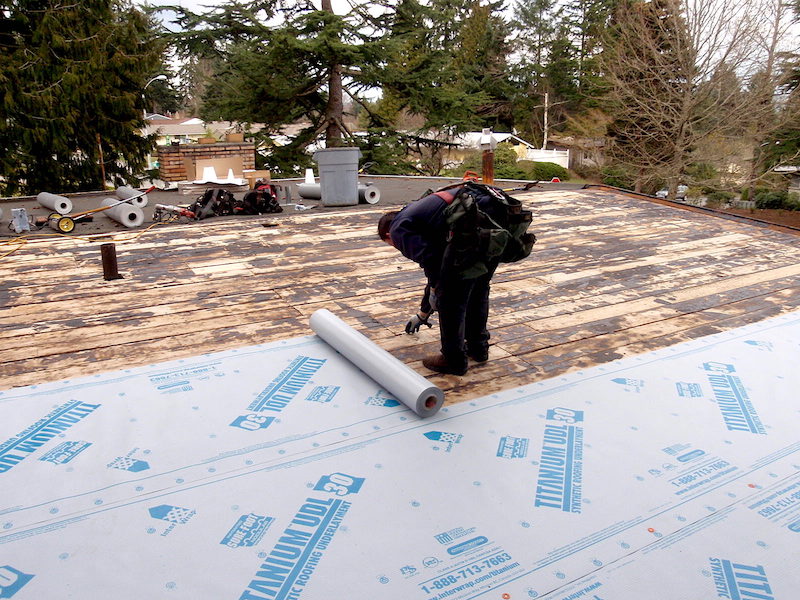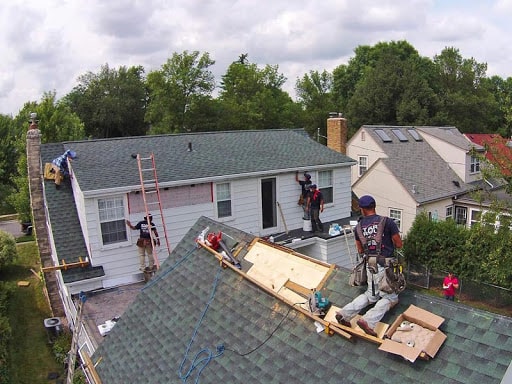Modern buildings are created using the latest technologies and equipment, which makes them as cozy and comfortable as possible. High-quality ceilings and walls of the house, protected from atmospheric influences, play a role in this, but even more important – to create a safe and secure roof of the building.
PVC roofing membrane, which appeared on the market of construction materials not long ago, effectively copes with its protective functions, is characterized by environmental safety and long service life.
Roof membrane conditioning
What is it membrane for roofing buildings are made of durable and flexible material – polyvinyl chloride. Coating manufacturers are constantly improving and improving the physical and chemical characteristics and properties of the membrane roof, according to the intended purpose of the product. In this regard, the material has a wide range of applications.

It can be used for the construction of roofs of new buildings or repair of old ones, it is used as a waterproofing material in the construction of walls, floors, foundations, communication passages, cellars and tunnels.
Excellent waterproofing characteristics of polyvinyl chloride coating allow its use in the construction of almost any buildings, engineering structures and structures. Among other things, the waterproof and durable material is excellent resistance to low and high temperatures. The manufacturers guarantee a long service life of the coating.
The use of the latest technology has significantly reduced the cost of production and processing of products that have become more accessible to consumers. Simplicity of operation and low cost make the PVC membrane technically and economically a material for construction.
Installation methods
There are several technical methods and techniques for installing PVC roofing sheets, the choice of which depends on the slope of the roof and other no less important factors.
The main methods of fixing the membrane are three: ballast; mechanical; glue. In the ballast method, the sheets of coating are attached to the glue, and then filled with ballast – gravel. For roofs with a greater degree of slope, the mechanical method of fastening the roofing membrane is used.
Polyvinylchloride sheets of material are fixed with fasteners (hardware), and a special machine for joining the joints ensures their tightness. For complex architectural forms of roofs with a greater slope, the adhesive method of fastening the polymer material is used. Such a roof can withstand strong winds.
This method is also used when repairing roofing.the scheme of installation of PVC membrane on the roof comfort of operation of the membrane roof is undeniable: multi-purpose application (from the creation, repair of roofs to waterproofing equipment at home).
The special structure of the polymer sheets effectively removes the moisture vapors generated under the coating, thus reducing the pressure. The roofing membrane’s resistance to negative environmental influences, atmospheric influences and long service life make it a leader among other products in this category. The excellent waterproofing properties of the polymer material make it much more durable than its analogues.
Compared to the usual roofing bitumen, PVC membrane costs about 30% more expensive, but it will last much longer. Manufacturers give a warranty period for the use of polymer roofing without repair work within 30 to 50 years, provided that the technology of installation.
Reliability, ease of installation, economic benefits and universal application allow the use of roofing membrane everywhere, both in new buildings and when restoring the roofs of old buildings. Convenient for consumers property polymer roof.
The large width of the membranes, which allows you to choose the optimal size of material for roofs of different configurations and sizes. A special welding machine for joints provides a high degree of tightness and strength of polymer joints, rather than when connecting sheets of bituminous material.
The single-layer roofing membrane essentially saves time for carrying out of installation works, and technical features of a material allow to lay it at any time of year, without changing technology. Examples of the device and cost of works There are approximate calculations of cost of packing of polyvinylchloride materials.
Roofing membrane made of polymer is a very light material that does not create additional load on the roof structure. Zero water permeability allows the use of polyvinyl chloride where intensive ice or standing water is formed. The unique strength and elasticity of the material makes it resistant to sharp temperature changes in a wide range.
The physical and chemical features of the membrane allow it to act as a pressure regulator on roofing layers, due to the external moisture resistance and internal vapor permeability. The polymer contains special substances and stabilizing additives designed to reduce its flammability. During welding works on joints the material is treated with hot air, which also increases the level of fire protection.
Welding and fixing membrane
Welding and fastening of the membrane The main stages of roofing works during the installation of the membrane are welding and fastening. Welding processes when laying the polymer material are carried out by means of automatic machines operating on 220V network with temperature regulation from 20C to 650C.
Machine for gluing the membrane pvc machine for gluing the seems professional roofing membrane laying is possible in all weather conditions.
The advantages of PVC membrane roofing include: high speed of laying – about 600 square meters per working day, resistance to mechanical damage due to the reinforcement of the membrane with polyester mesh, resistance to active chemicals, aggressive environment, long service life, a high degree of fire safety and environmental protection, high resistance to sharp changes in temperature.


